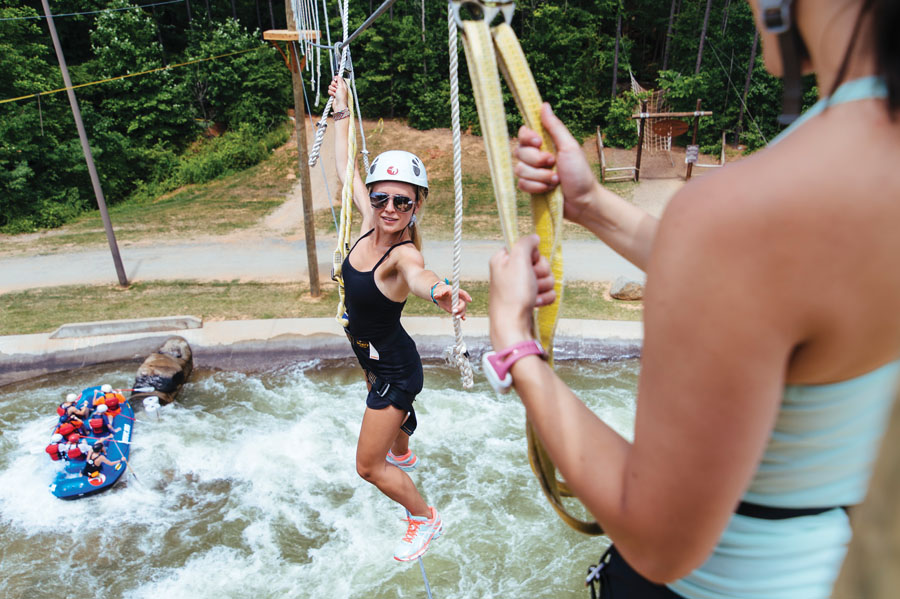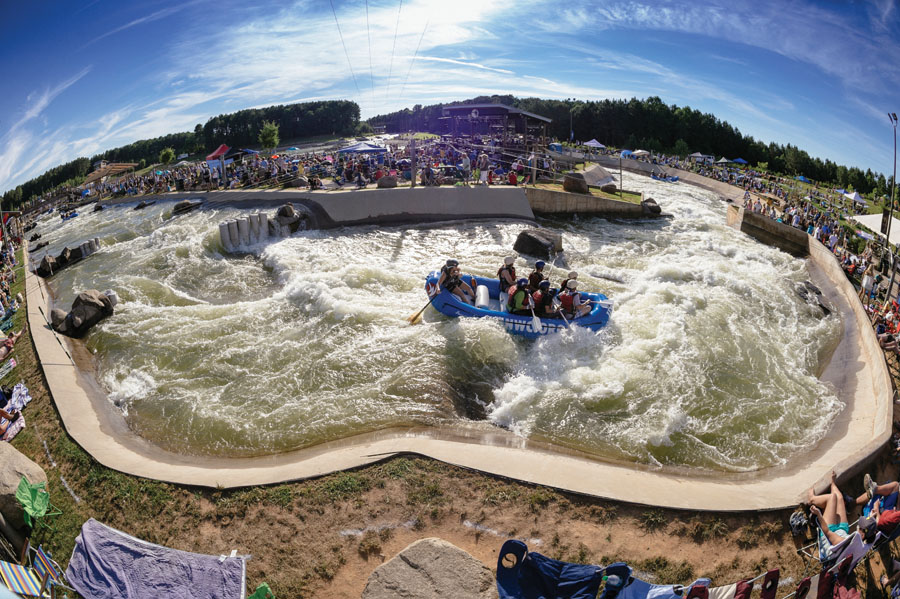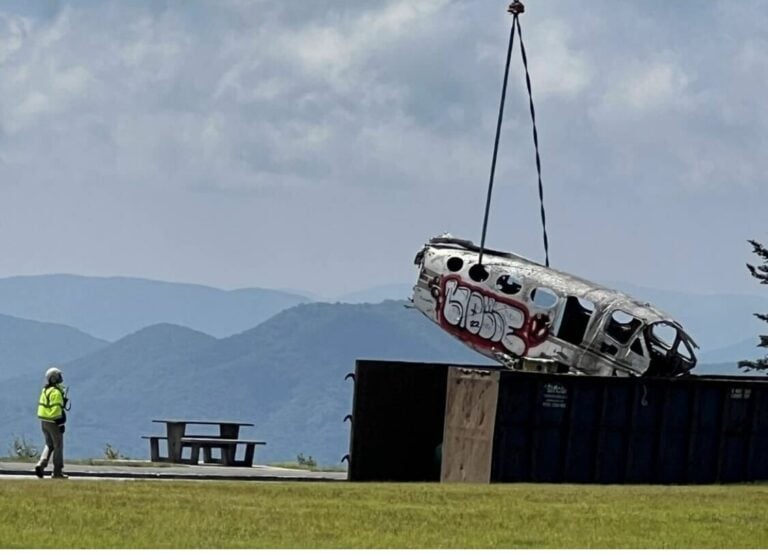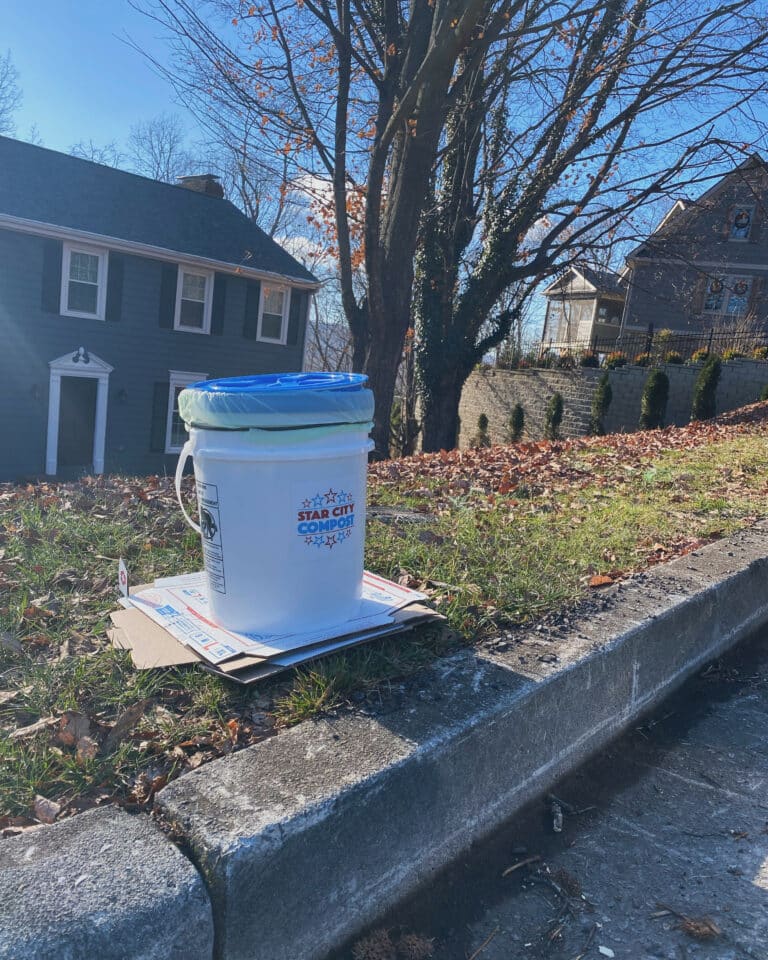Imagine living in a place where a river always flowed and there was no such thing as “paddling season”—you could get your whitewater fix seven days a week, 52 weeks a year if your shoulders held.
By and large, that place exists right here in the Southeast. Between rainforest-like springs, summer releases, wet falls, and winter snowmelts, river running is available year round. That’s certainly more than the boaters out West can claim. Their paddling season is short, inconsistent, at the whims of their fickle weather.
But it’s perhaps this unpredictability that is responsible for a growing number of whitewater parks in states like Colorado and Montana, an idea that is just now starting to gain traction in the East. Paddling hubs like the Adventure Sports Center International (ASCI) in Maryland and the Nantahala Outdoor Center (NOC) in North Carolina are the stomping grounds for some of the world’s stoutest kayakers and, it’s worth noting, some of the earliest sites for artificial river features here on the East.
So what is a whitewater park exactly? Think of it as a skate park for kayakers, an entirely man-made series of features that either require the creation of an artificial river from scratch or the modification of an existing one. Whitewater holes and waves that are placed into a natural river, like the NOC’s permanent freestyle feature, are costly investments and require the use of bulldozers and heavy machinery. But money and equipment aside, taking these projects to fruition also eats up years of jumping through bureaucratic hoops, acquiring permits, persuading community leaders, and ensuring that the environment is not damaged in the process.
Still, it’s not impossible. Colorado alone has more than a dozen whitewater parks and play features scattered throughout the state with plans in the works for more. The benefits of integrating this concept into small communities are numerous. At the top of the list? The economic impact that comes from introducing outdoor recreation as a sustainable means of local revenue.
For kayakers, Denver, Colo., wasn’t always an appealing place to live. But after a flood ravaged the confluence of Cherry Creek and the South Platte River, leaving the surrounding industrial area abandoned and littered with oil tanks and storage containers, the city decided not only to do something to prevent flooding in the future but also to make that section of river recreation friendly.
Now, nearly 40 years after that flood, Confluence Park attracts kayakers, inner tubers, and dog walkers alike. It’s become a source of pride for the community.
Here in the East, where arguably the best paddling in the country exists, what need is there for whitewater parks? And more importantly, how on Earth will it ever be possible to convince local governments fueled by decades of natural resource extraction to turn the wheels and drop hundreds of thousands of dollars (at the very least) all for the sake of a bunch of river lovin’ hippies?
“It starts by thinking a little bit larger than yourself,” says Risa Shimoda, a seven-time paddler on the U.S. National Freestyle Team and a fixture within the paddling community.
Shimoda’s spent the better part of her life dedicated to the sport of paddling, from securing river access to promoting rodeo, but her work now with the McLaughlin Design Group focuses specifically on helping local paddling communities take their vision of a backyard whitewater feature from dream to reality.
“Who’s going to spend a million bucks on a bunch of kayakers?” Shimoda adds.
Well, to be perfectly honest, no one. Unless, that is, you’re a bunch of kayakers who happen to share the river with a diminishing species of fish, like the American shad.
“We had some perfect storms that helped us, and in any other situation it would have been extremely difficult to create a dialogue with the power company,” says Matt Samms, a 40-year-old kayaker from Safe Harbor, Penn., who has spent nearly his entire life on the waters of the Susquehanna.
Samms was one of the key players who helped ensure that PPL Electric Utilities followed through with its promise to build whitewater features below Holtwood Dam after the plant applied for a relicensing that would have taken away 264 hours of recreational release time from paddlers. In short, thanks in part to over 60 years of efforts to help the Susquehanna shad make its annual upstream river passage as well as the heavily involved presence of American Whitewater (AW) and the local Lancaster County paddling community, the kayakers got what they wanted and PPL took a loss—a $4 million dollar loss, at that.
“It’s world class whitewater,” Samms says of the big volume Susquehanna. “We’re hoping to have a world championship event here which would bring international paddlers. That would be huge.”
Perhaps Shimoda wasn’t necessarily thinking about fish when she advised paddlers to think larger than themselves, but there’s no question that a world championship event at Holtwood Park would draw much-needed attention to the local businesses and area attractions that Lancaster County has to offer and help establish that slice of Pennsylvania as a whitewater destination on par with the Bryson Cities and Deep Creeks of the East.
The land surrounding Holtwood lends itself to further development, something perhaps that might resemble the U.S. National Whitewater Center (USNWC) in Charlotte, N.C. Though on the larger end of the whitewater park spectrum, the USNWC embodies exactly Shimoda’s sentiments on play parks, that they need not only cater to kayakers but to the area’s residents in general.
“There’s something out here for everybody. The Olympian in-training is going to come out on the water the same day a family comes out to enjoy rafting for a day or to get dinner and listen to live music,” says Eric Osterhus, the brand manager for the USNWC.
With over 20 miles of trails, rock walls, zip lines, and a boat conveyor belt, your backyard play feature will likely look nothing like the USNWC. But according to Shimoda and Samms, with a little passion, a lot of patience, and a helluva lot more persistence, anything is possible.









